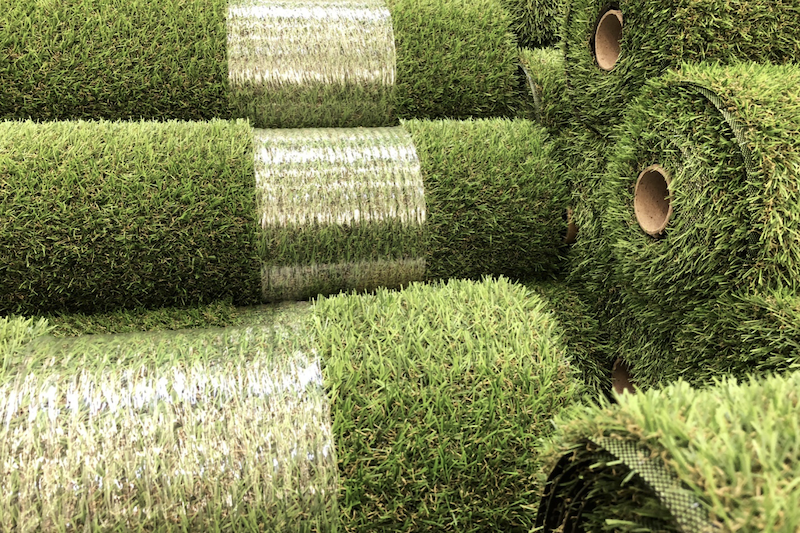Did you know that more than a dozen lawn grass types are commonly used? Regardless of what kind of grass you use, many people struggle to pick turf or grass. Which is better for an athletic outing to blanket your playing field?
If you’re curious between an artificial turf field or natural grass sports field, we’re here to help. Read on to learn the pros and cons of both popular options.
Artificial Turf
To begin, let’s look at artificial grass. Typically referred to as “turf,” artificial grass has become extremely popular in the last few decades.
Artificial grass is most common in indoor fields. You can also find artificial grass in harsh climates where caring for natural grass is more complicated.
Read on for some quick qualities of artificial turf.
Maintenance
One of the first things people consider when picking their field is maintenance. Maintenance is one of the most expensive parts of keeping a sports field. How much care goes into your turf for athletes?
If cared for properly, artificial turf will last up to 25 years! They’re also immune to many of the issues that ravage natural grass. Disease, fungi, weeds, and dying out won’t affect your turf.
However, that isn’t to say there’s no maintenance. You should look into stain management. Food, pet, sweat, and oil stains are mowed away in regular grass, but you’ll need to clean artificial turf.
There are also specific ways to handle common issues like animal and pet waste. For example, you should let solid waste dry so it’s easier to remove. With natural grass, these hazards sink into the soil.
Look into the necessary steps to care for your artificial turf. You can quickly learn how to manage your Orange County Artificial Grass!
Cost
Another crucial factor is the cost of your artificial grass. How much will it cost to install your new turf sports fields?
Finding an average is difficult, as many factors affect the price. Some companies may charge more for the same product, while others may carry a product you desire.
Did you know there are different kinds of artificial grass? Some types are meant to mimic different types of sports grass, such as in golf courses. Others are intended to be easier to handle or feel more synthetic.
You should look into the vendors near you and see what they offer for artificial turf. Consider using your artificial grass and see what best fits your needs. From there, you can work out an average closer to your actual cost.
Comfort and Safety
Finally, if you’re playing sports on the field, you should think of the comfort and safety of players. Artificial grass has little to no cushion and is usually made of plastic! Isn’t that dangerous for players to fall and slide on?
Comfort-wise, artificial grass poses a few issues. Some sports have begun banning or limiting the installment of turf sports fields due to players getting injured. If the turf has concrete beneath, it’s much more dangerous for players, particularly for head injuries.
One popular workaround is to install infill made from tires, called “crumb rubber” or “tire crumb.” Using crumb can help lessen the impact of a fall.
That said, crumb poses multiple environmental issues that scientists warn against. The chemicals in the tires are often considered harmful to human health and the environment. While it rarely impacts humans due to being buried, the environmental impact is notable.
Otherwise, artificial grass is kid-friendly and hypoallergic. You also rarely need to worry about pests like insects, rodents, and snakes, as they don’t enjoy the plastic feel.
Grass
Now that we know some pros and cons of artificial turf, what are the ups and downs of grass?
Grass is the classic material to use for sports fields. Read on for a quick guide on the pros and cons of natural grass sports fields.
Maintenance
Maintenance of grass is much more intense than it is for artificial turfs. Many professional institutions hire full-time groundskeepers to maintain a natural grass field.
Natural grass must be watered regularly and consistently checked for pests. It’s also important to look out for weeds, holes, and other frequent issues with grass.
Mowing and keeping the grass short is also vital. If your sports field is used for competitive sports, there may be regulations on how long you can have your grass. Make sure you’re aware of any regulations on your sports field before you choose your grass!
Cost
Like artificial turf, choosing the exact price of a grass field is difficult. There are many different breeds of grass that are useful for different kinds of fields. Companies may also offer various deals or incentives for their products.
You should look into what local companies are offering. However, you can’t forget to factor maintenance into your cost!
Think of the monthly cost of the upkeep of your grass field. The price will be considerably higher than an artificial turf field. You also may need to hire someone solely to upkeep your natural grass field.
Comfort and Safety
Finally, what about the comfort and safety of a grass field?
Natural grass is much more comfortable than turf. Beneath grass is dirt and soil, a softer cushion when your athletes fall. If you’re upkeeping your grass, there should be no stones or rocks to harm athletes.
That said, some athletes are allergic to natural grass, and pests can pose a health risk. Make sure you try to find hypoallergenic grass and keep your field pest-free!
Deciding on Turf or Grass
Picking between turf or grass is a crucial choice for your sports field. Think of the athletes and what sports your teams will play on your field. Additionally, consider the cost of upkeep and what you’ll need to keep your field pristine.
For more information, be sure to read our extensive site!

